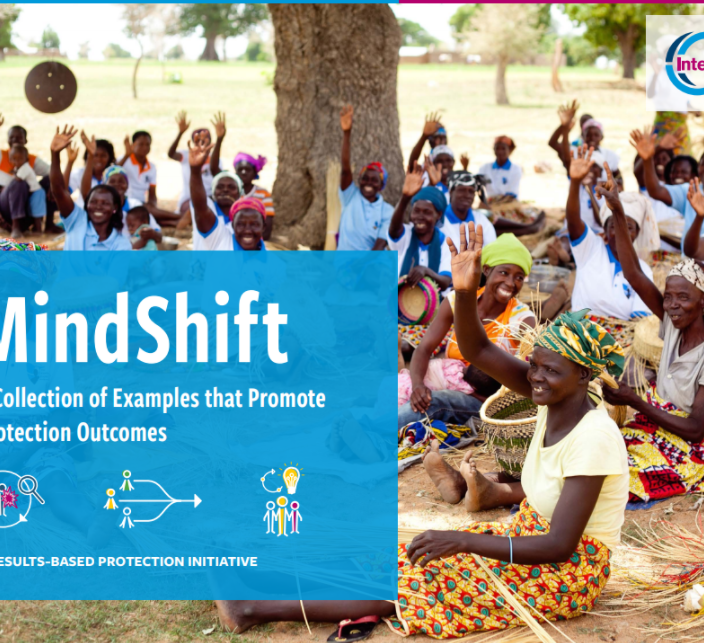Since 2012, InterAction has been working with various actors across the humanitarian community to identify the key elements that make up successful protection interventions which achieve protection outcomes and reduce risk. This year, we published a collection of case examples that highlight emerging practice by humanitarian organizations that have explored innovative ways to adopt results-based approaches to protection. Our new publication that was just released is called, MindShift: A Collection of Examples that Promote Protection Outcomes.
The new publication spotlights 13 case examples from different humanitarian organizations working across the world on protection.
Several case examples demonstrate a focus on continued, context-specific protection analysis: RBP key element #1. For example, Mercy Corps’ prioritization to hire dedicated humanitarian analysts demonstrates promise to feed into organizational efforts to contribute to protection outcomes; the Danish Refugee Council (DRC)created a participative tool for protection analysis based on focus group discussions, and WeWorld-GVC developed a Community Protection Approach (CPA) which feeds community engagement analysis into their programming. In fact, WeWorld-GVC placed first, and DRC second, in InterAction’s RBP good practice contest, which sought to collect examples from humanitarian organizations that have embraced RBP in their protection work. These case examples emphasize the significance of contextualization in protection work: risk does not manifest the same everywhere, and so approaches and programs addressing protection risks must be adapted from context to context.
Other case examples highlighted emerging best practices in outcome-oriented methods. CIVIC’s use of results journals to track their progress towards protection outcomes in Maiduguri, Nigeria is one such example.
Several case examples focused on the different aspects of the risk equation. JHAJA tackled what many humanitarian organizations find challenging—addressing the threat—in their work to reduce violence in Honduras. Their willingness to work with gang-affiliated members has allowed them to intervene in ways other organizations cannot. Furthermore, some case examples found innovative ways to identify risk. Save the Children used risk mapping activities to locate areas of high risk in places affected by gang violence in Honduras.
Strengthening protection analysis was a significant theme among the InterAction RBP contestants. IRC Italy’s tool, which takes advantage of fast-paced technology and communication capabilities to identify risk and increase the community’s capacities to address risk, won second place in InterAction’s RBP contest. Moreover, the UNFPA Regional Syria Hub received an honorable mention for its approach to collecting GBV data. The approach is grounded in the perspective of the affected community and uses a comprehensive set of tools and methodologies to strengthen the organization’s understanding of risk.
However, some aspects of RBP were more challenging to demonstrate in practice. Multi-disciplinary strategies proved difficult to document. There are ongoing efforts in the community to find ways for humanitarians to better collaborate and work with each other and with other disciplines, but further experimentation is needed on this front. In addition, measuring risk reduction remains one of the most challenging parts of protection work. There are emerging initiatives that will explore how to measure protection outcomes, including InterAction’s recently launched results-based evaluation framework to measure GBV prevention outcomes (GBV PEF). Hopefully, future documentation efforts will help guide the humanitarian community to develop tools and methods to fill in this gap in the community’s knowledge.
With this new publication of examples , InterAction has highlighted several good practices and innovative approaches by humanitarians aiming to achieve protection outcomes. InterAction will continue to identify results-based approaches to protection in practice and work with organizations to better achieve protection outcomes, and in particular, will look forward to addressing the more challenging elements of RBP.
